iPhone 6 and iPhone 6 Plus: Preliminary Results
by Joshua Ho on September 22, 2014 7:07 AM EST- Posted in
- Smartphones
- Apple
- Mobile
- iOS
- iPhone 6
- iPhone 6 Plus
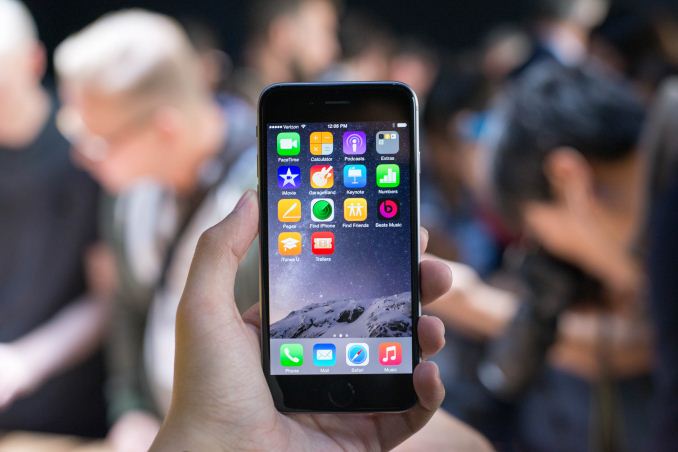
While we’re still working on the full review, I want to get out some preliminary results for the iPhone 6. For now, this means some basic performance data and battery life, which include browser benchmarks, game-type benchmarks, and our standard web browsing battery life test. There’s definitely a lot more to talk about for this phone, but this should give an idea of what to expect in the full review. To start, we'll look at the browser benchmarks, which can serve as a relatively useful proxy for CPU performance.
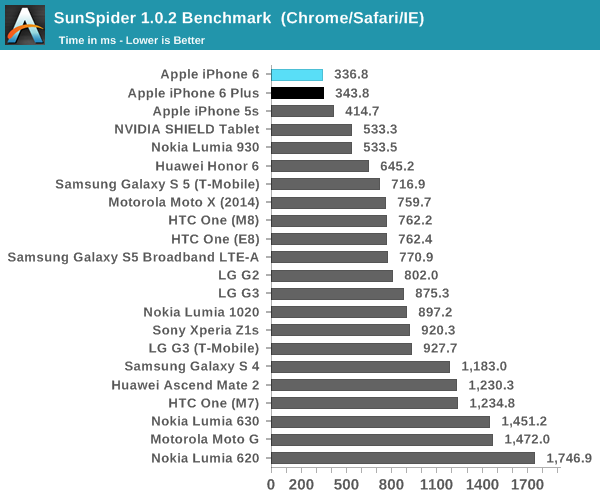
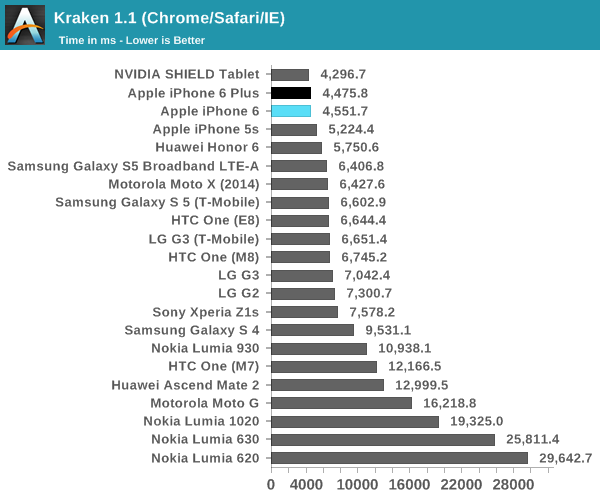
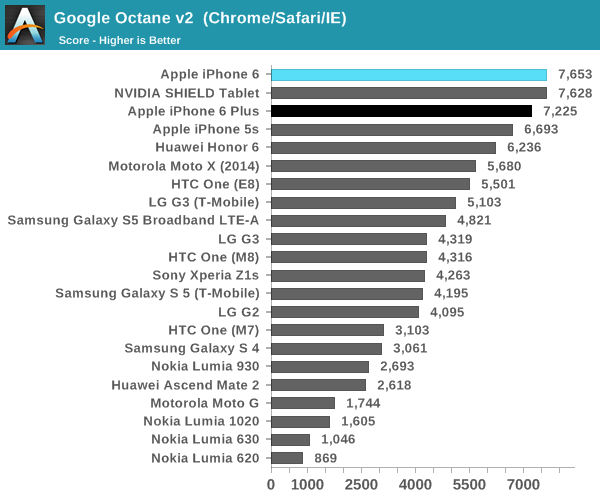
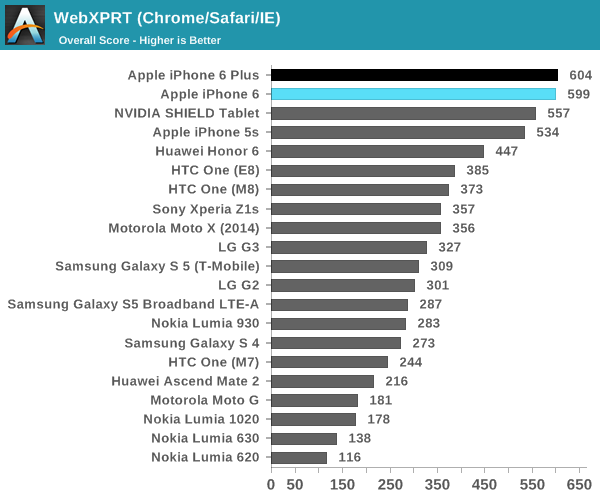
There are a few interesting observations here, as a great deal of the scaling is above what one would expect from the minor frequency bump when comparing A7 and A8. In SunSpider, we see about a 13% increase in performance that can't be explained by frequency increases alone. For Kraken, this change is around 7.5%, and we see a similar trend across the board for the rest of these tests. This points towards a relatively similar underlying architecture, although it's still too early to tell how much changes between the A7 and A8 CPU architectures. Next, we'll look at GPU performance in 3DMark and GFXBench, although we're still working on figuring out the exact GPU in A8.
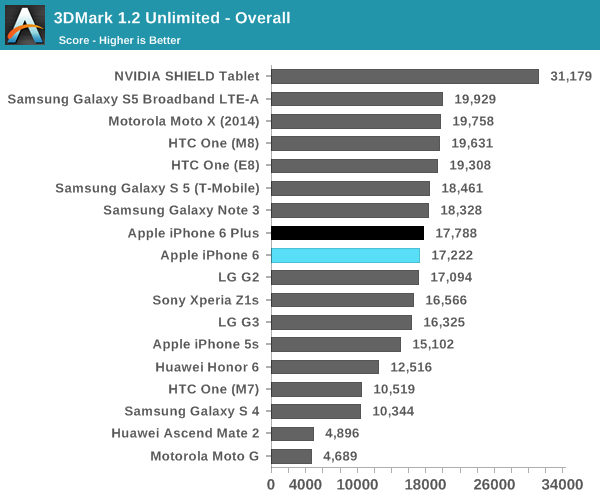
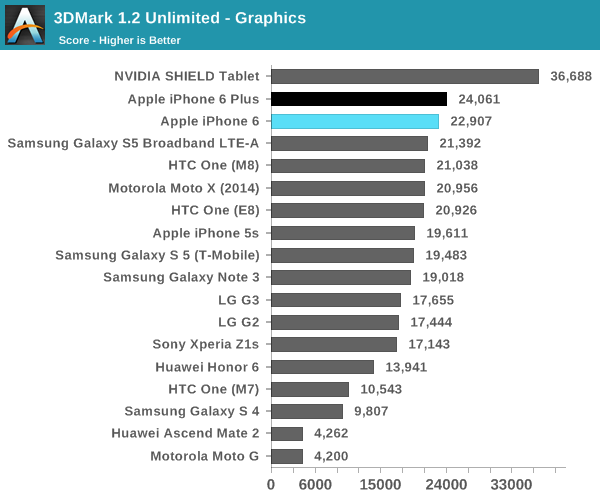
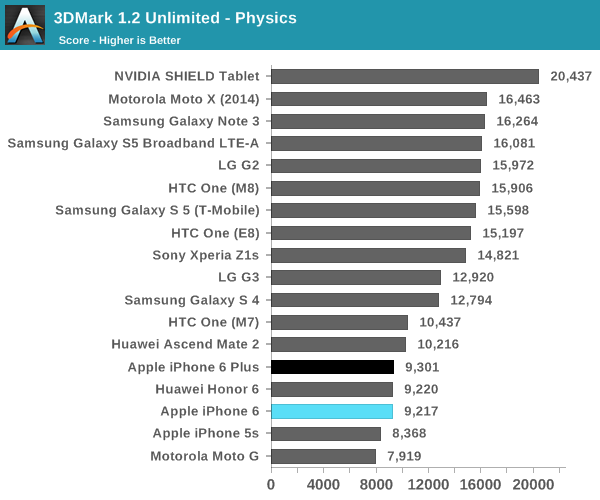
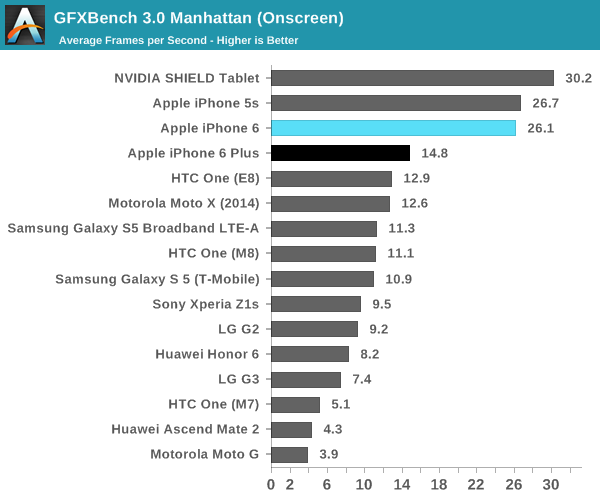
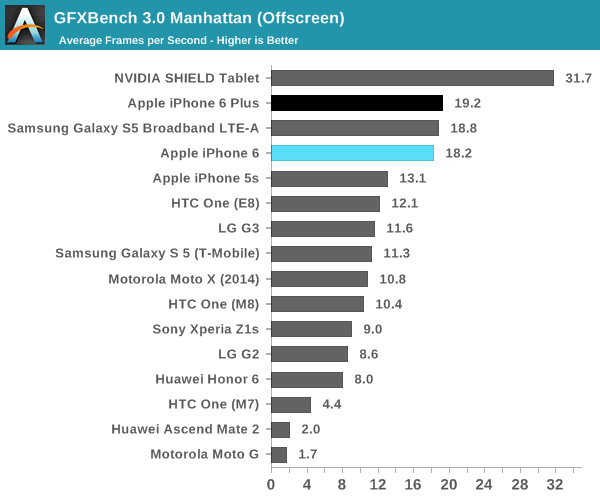
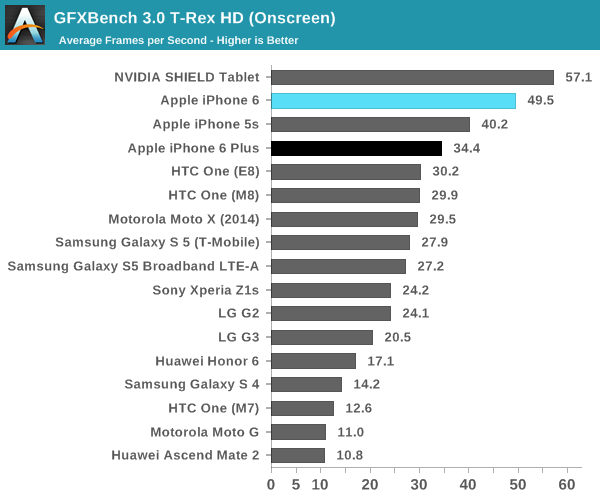
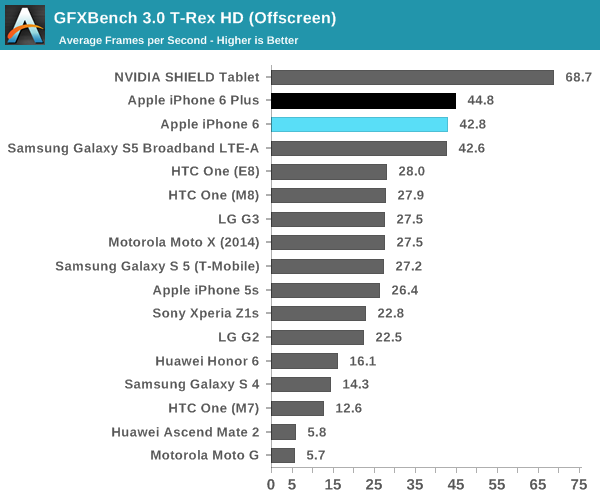
In in GPU benchmarks, we generally see a pretty solid lead over the competition for the iPhone 6/A8. It's seems quite clear that there is a significant impact to GPU performance in the iPhone 6 Plus due to the 2208x1242 resolution that all content is rendered at. It seems that this is necessary though, as the rendering system for iOS cannot easily adapt to arbitrary resolutions and display sizes. Before we wrap up this article though, I definitely need to address battery life. As with all of our battery life tests, we standardize on 200 nits and ensure that our workload in the web browsing test has a reasonable amount of time in all power states of an SoC.

As one can see, it seems that Apple has managed to do something quite incredible with battery life. Normally an 1810 mAh battery with 3.82V nominal voltage would be quite a poor performer, but the iPhone 6 is a step above just about every other Android smartphone on the market. The iPhone 6 Plus also has a strong showing, although not quite delivering outrageous levels of battery life the way the Ascend Mate 2 does. That's it for now, but the full review should be coming in the near future.










316 Comments
View All Comments
Sushisamurai - Monday, September 22, 2014 - link
The difference would be displacement. If I had a 6 cylinder 2L displacement for 400HP versus a 8 cylinder 3L displacement for 400HP, i would choose the 6 cylinders for the efficiency.You could also extend the metaphor to the car is advertised as 400HP, but brake horsepower could actually be 250BHP vs 300BHP.
SirKnobsworth - Monday, September 22, 2014 - link
Apple makes up for the frequency difference with more IPC, and most smartphone workloads aren't threaded enough yet to notice a difference beyond dual core.Vjgoh - Monday, September 22, 2014 - link
If you go back to last year's iPhone 5s review, you'll find this tidbit at the beginning:"Then there’s the frequency discussion. Brian and I have long been hinting at the sort of ridiculous frequency/voltage combinations mobile SoC vendors have been shipping at for nothing more than marketing purposes. I remember ARM telling me the ideal target for a Cortex A15 core in a smartphone was 1.2GHz. Samsung’s Exynos 5410 stuck four Cortex A15s in a phone with a max clock of 1.6GHz. The 5420 increases that to 1.7GHz. The problem with frequency scaling alone is that it typically comes at the price of higher voltage. There’s a quadratic relationship between voltage and power consumption, so it’s quite possibly one of the worst ways to get more performance. Brian even tweeted an image showing the frequency/voltage curve for a high-end mobile SoC. Note the huge increase in voltage required to deliver what amounts to another 100MHz in frequency."
Mobile devices just aren't very good at parallelization yet. You're constrained by the amount of power you can draw and the amount of heat you can dissipate. Additionally, a lot of problems that we solve on our mobile devices (email, web browsing, etc.) just don't break up into parallel problems well. However, I expect this is why the Android phones all crush the iPhones on the physics tests--those problems CAN be solved by throwing more cores at them.
SirMaster - Monday, September 22, 2014 - link
Same way a 3GHz 4 core Intel CPU beats a 4GHz 8 core AMD.cheinonen - Monday, September 22, 2014 - link
Performance with multiple cores all depends on the task at hand. Think of building a house. There are a lot of tasks going on at once and so having more people/cores to work on that will get it done faster. If all you have to do is change a lightbulb, then having 8 people/cores will just result in one changing it while seven look around doing nothing. Having two really fast cores so you can do that task faster (while one handles background tasks) will work better.Software design is much further along than it was a decade ago when it comes to multi-core workloads, but there are still many tasks that just don't scale well to multiple cores. This is what hampered the PS3 as well, in that it had tons of cores but was harder to program for than a system with fewer, faster cores. There is no single right choice, as each has benefits and drawbacks, but it's why you'll see different systems win different tests as they're optimized towards different workloads.
tehdef - Monday, September 22, 2014 - link
Because iOS is native and Android is not.This is the most clear cut and precise answer you will receive.
tuxRoller - Monday, September 22, 2014 - link
Android IS native...most third party apps aren't.vFunct - Monday, September 22, 2014 - link
Very few software uses more than 1 or 2 cores.Basically those extra cores in an 8core system are wasted, designed to fool ignorant people into thinking they are better because it has bigger number.
The thing about engineering, is that a bigger number isn't better.
DeciusStrabo - Wednesday, September 24, 2014 - link
That's not correct. For example Android doesn't even allow you to run network stuff in the same thread as UI stuff. Most Apps are actually multi-threaded without you doing anything nowadays, because the libraries and APIs you call already do the whole scheduling stuff for you.Also, even if a App is single threaded you usually run several Apps on your phone at the same time, doing background tasks, you have tasks checking your connections, GPS, audio etc. All things that benefit from more threads.
Shatta_AD - Monday, September 22, 2014 - link
I'm surprised all these people claiming their phone(s) have 8-octo Cores doesn`t understand the concept behind the implementation of the BIG.little configuration. Most implementations actually doesn`t use all 8 cores. At any one time, EITHER the `BIG`(4) cores are processing heavy threads or the `little`(4) cores are processing light threads. So technically, all these marketing gimmicks of so called `Octocore` SoCs are in fact `Quadcore` systems.